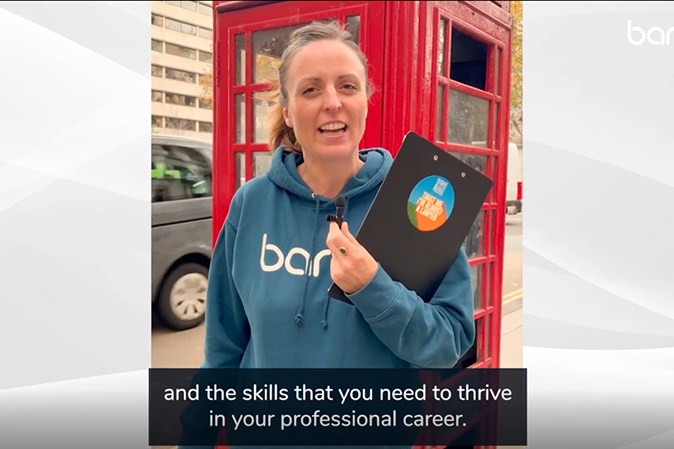Welcome! Save 30% on all CLE, CPE, and Professional Skills webinars, plus 15% off any annual pass with code HOLIDAY25
About the Course
Introduction
This CLE course will address the legal means of closing a business while minimizing personal risk. The expert panel will guide corporate counsel on the best approaches to personal guaranties and dealing with other creditors for businesses unable to reopen their doors. Companies must consider the employee-related claims which account for the vast majority of cases where creditors of a business assert claims against the owners for personal liability and determine any additional sources of recovery that are not obvious.
Description
Shutting down a business is an art, not a science. There is a commonly held belief among many small business owners that they can close the doors and toss the proverbial keys to their creditors. But, that is not enough; lenders and other creditors have no obligation to "catch keys" thrown their way.
A structured plan is necessary for any business seeking to close its doors, whether due to its failure or the owner's desire. Foremost in planning for a winding down is ensuring that employees receive the wages, benefits, and vacation pay to which they are entitled--and meeting payroll tax obligations. Employee-related claims account for the vast majority of cases where creditors of a business assert claims against the owners for personal liability.
Additionally, businesses should identify all possible sources of recovery to fund the winding down of the company. Owners should explore insurance premium refunds (especially where headcount or out-of-date revenue information is the basis for premiums), security deposits, season-ticket licenses, and the licensing or sale of intellectual property.
Listen as our authoritative panel reviews the checklist and best practices for shutting down a business that is no longer sustainable and maximizing sources of recovery while minimizing personal liability of the owner(s).
Presented By

With a client list full of families navigating business and generational transitions, Fortune 500 companies and risk-taking mavericks who won’t take “no” for an answer, Mr. Clinton knows what it takes to develop creative solutions when big ideas result in big problems. Whether he’s serving as lead counsel in one of the growing number of fiduciary litigation claims within family businesses, advising a family in transition, or helping a developer sidestep a legal and public relations disaster in a new residential community, Mr. Clinton’s focus is always the same – understand and achieve the client’s goals, either in or out of the courtroom. His clients span nearly every industry, including beverage distribution, real estate, manufacturing, telecommunications and transportation.

With a focus on areas such as mergers and acquisitions, debt refinancing and restructuring, and business workouts and turnarounds, Mr. O'Neil helps business owners, lenders and other stakeholders when companies are in transition. He represents both healthy and distressed companies in connection with sales, refinancings and liquidations, as well as in chapter 11 section 363 asset sales and “true reorganization” bankruptcy cases where judicial remedies are needed. Mr. O'Neil is known to many as a trusted advisor during difficult times. He serves as the chair of the Distressed Company Task Force that was created to assist borrower clients in every way, including in discussions with their lenders and in addressing concerns over suppliers and stakeholders.
-
This 90-minute webinar is eligible in most states for 1.5 CLE credits.
-
Live Online
On Demand
Date + Time
- event
Tuesday, September 8, 2020
- schedule
1:00 p.m. ET./10:00 a.m. PT
- Reasons to wind down a business
- Attempts to limit personal liability
- Guaranties
- Sources of recovery
- When to consider bankruptcy
The panel will review these and other key issues:
- What steps should a small business owner take to minimize personal liability when shutting down a business?
- How should business owners handle employee-related debt, including wages, benefits, payroll taxes, and vacation pay?
- Where can a business seek sources of recovery to pay outstanding debt during a wind down?
- When should a business or its owners consider bankruptcy?
Unlimited access to premium CLE courses:
- Annual access
- Available live and on-demand
- Best for attorneys and legal professionals
Unlimited access to premium CPE courses.:
- Annual access
- Available live and on-demand
- Best for CPAs and tax professionals
Unlimited access to premium CLE, CPE, Professional Skills and Practice-Ready courses.:
- Annual access
- Available live and on-demand
- Best for legal, accounting, and tax professionals
Unlimited access to Professional Skills and Practice-Ready courses:
- Annual access
- Available on-demand
- Best for new attorneys
Related Courses
Recommended Resources

BARBRI Professional Development Content Forum Expands Global Reach, Deepens Insights
- Learning & Development


How Akin Is Redefining Learning for Law Firm Business Professionals
- Learning & Development
- Learning & Development

